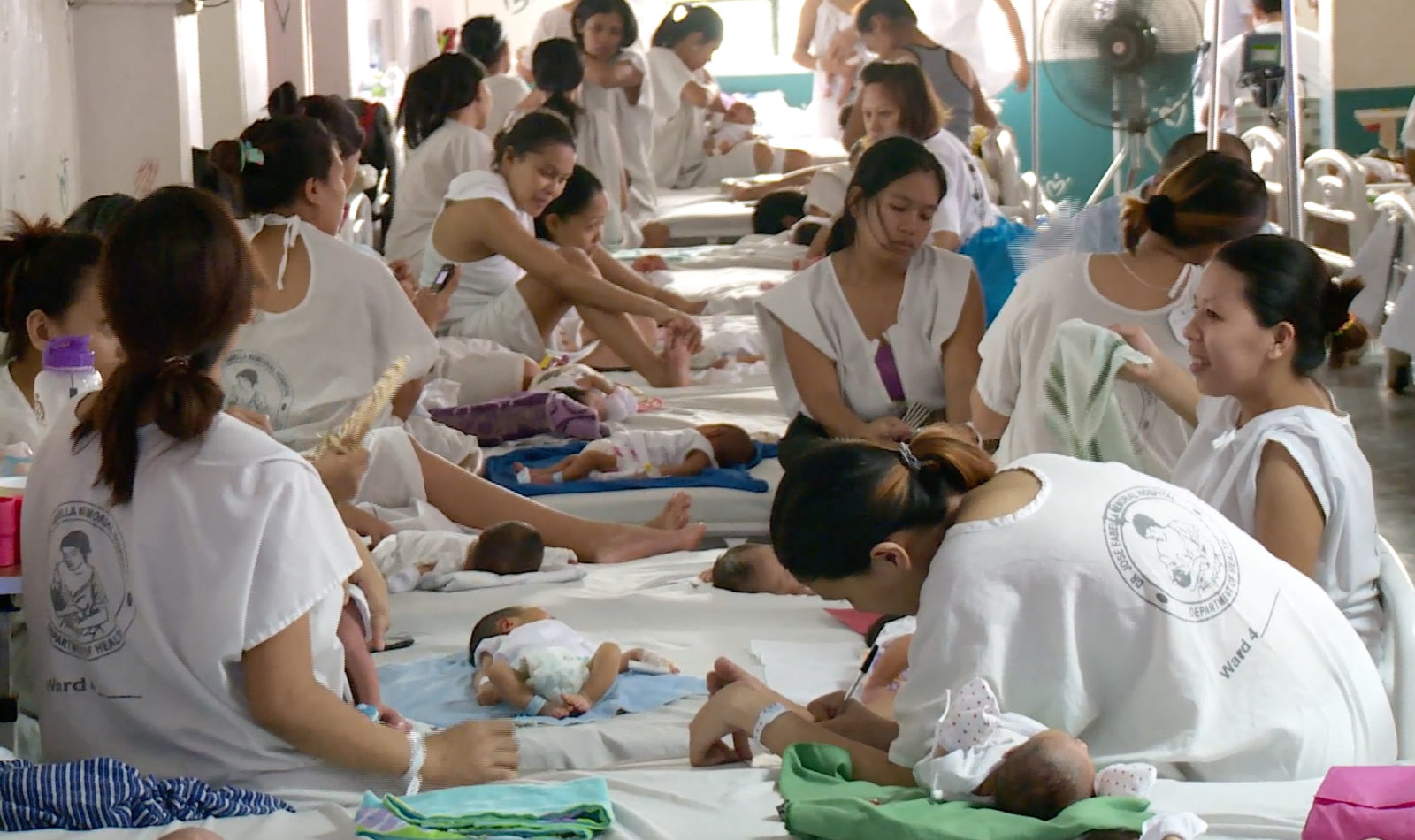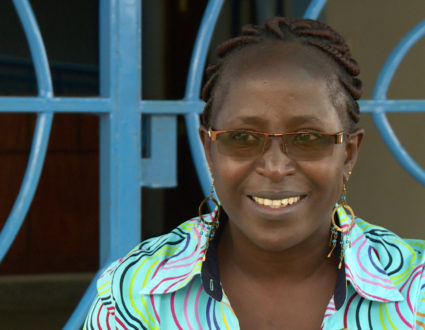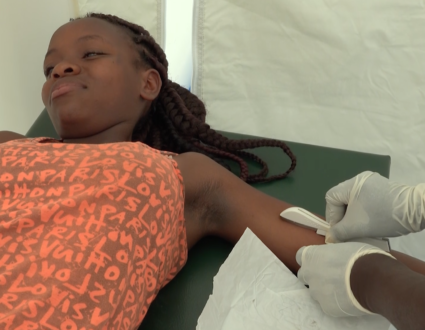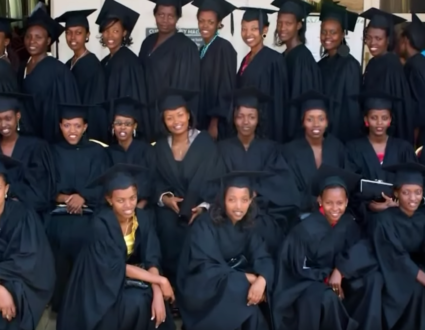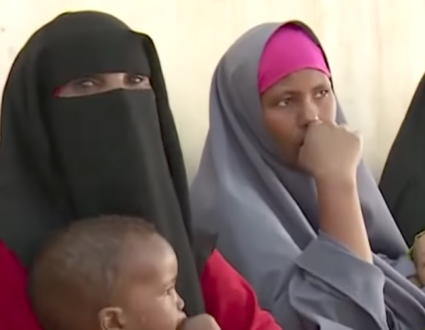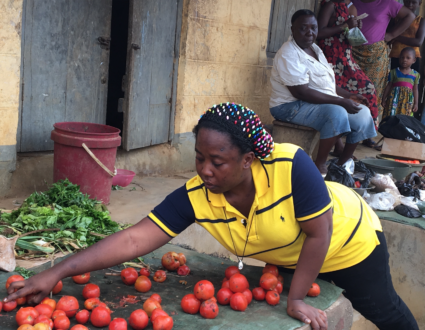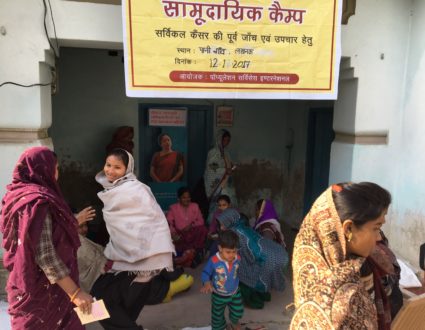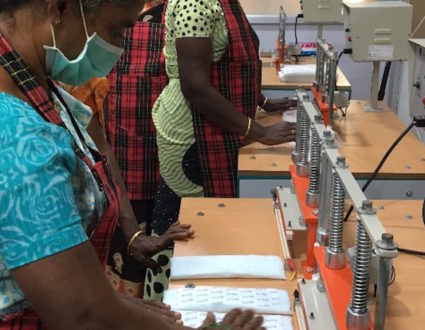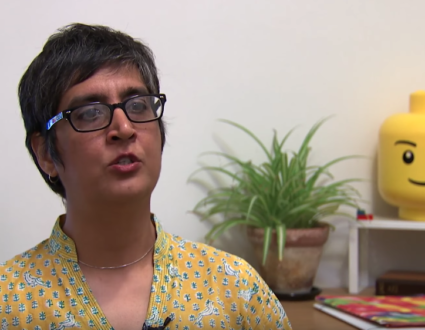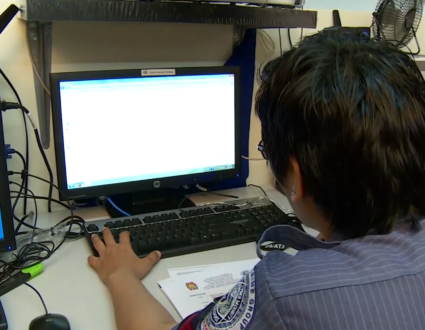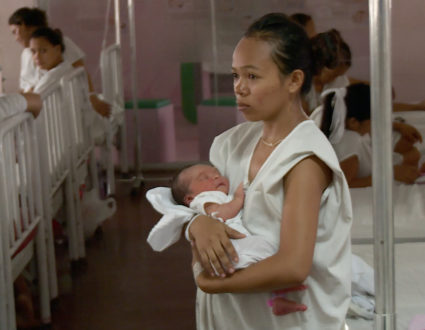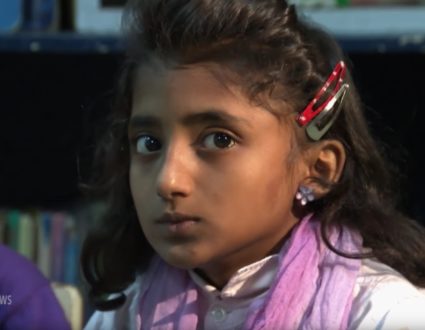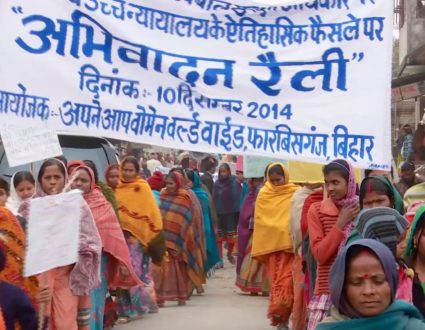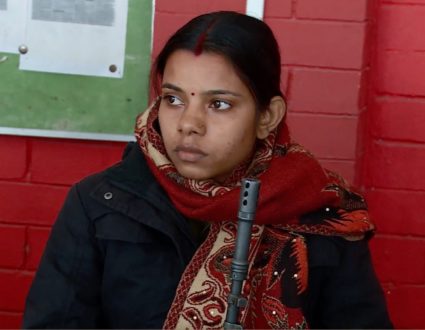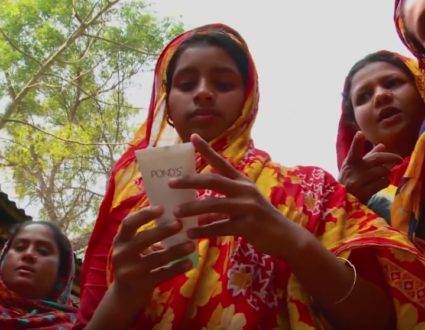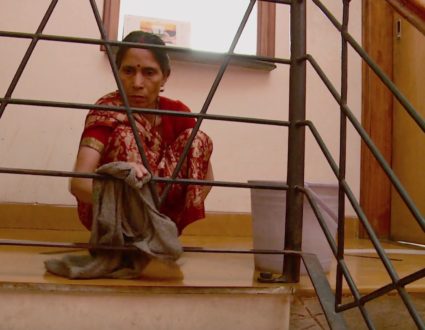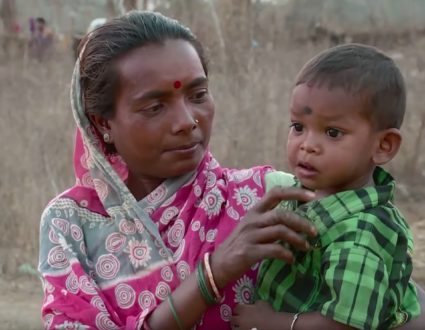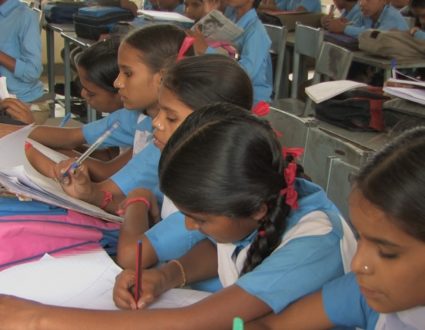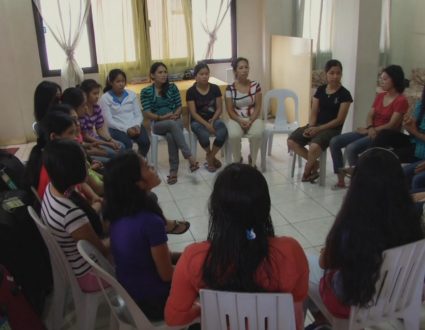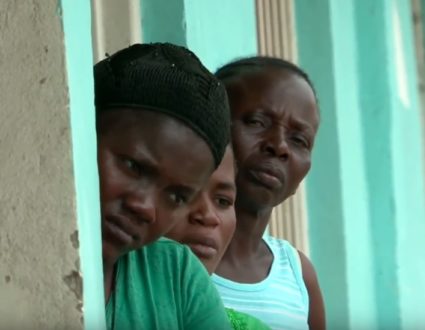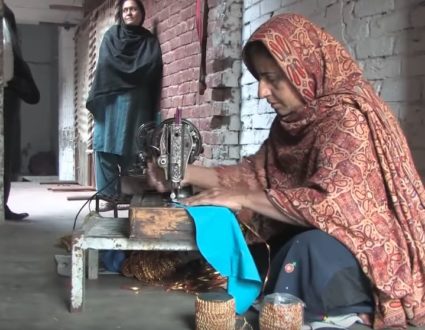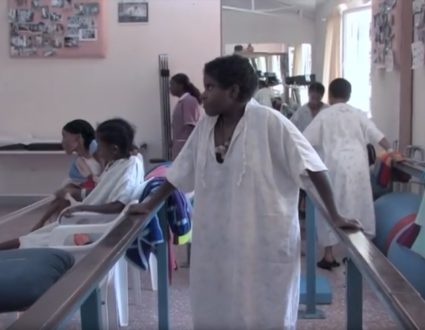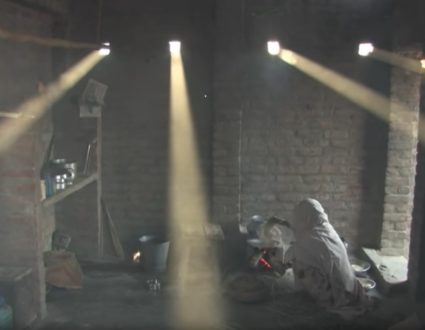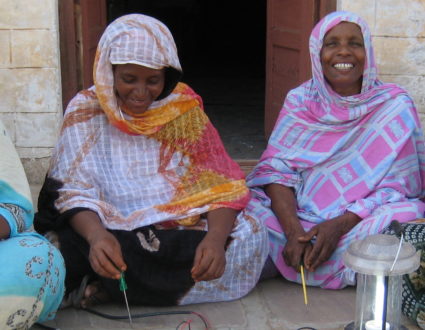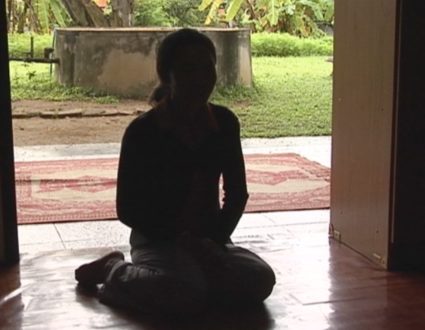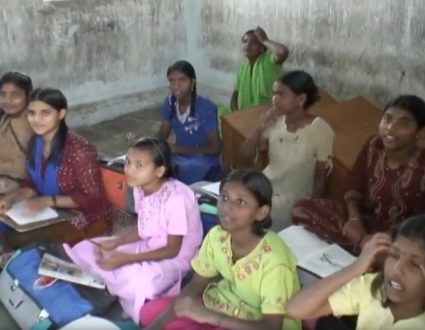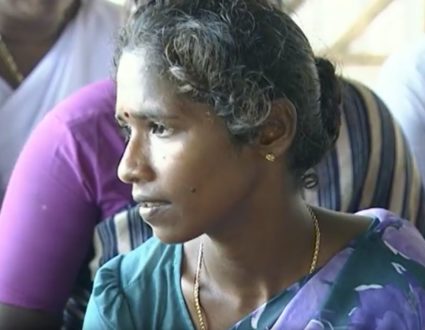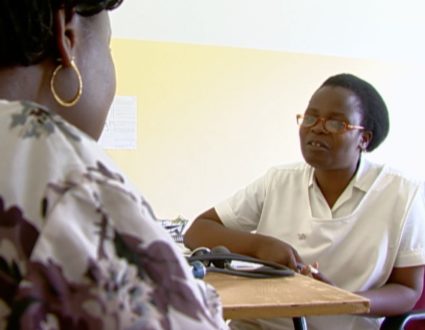- GWEN IFILL:But first, the rollout of a controversial reproductive health law in the Philippines long resisted by the Catholic Church there.Special correspondent Fred de Sam Lazaro reports from Manila.A version of this story aired on PBS’ “Religion & Ethics Newsweekly.”
- FRED DE SAM LAZARO:It’s known as the baby factory. But unlike most factories, the people who run Manila’s biggest public hospital wish this one were less productive.The staff here at the maternity ward say this is a fairly typical, if not slightly quieter than usual day. Still, there are 165 new mothers squeezed into 127 beds. About 70 babies are delivered every day. Their mothers are treated free of charge. They couldn’t afford much anyway, with household incomes of $5 a day, often less.Most, like Irene Ocampo, who’s 19, will tell you their pregnancy was unplanned.IRENE OCAMPO, New mother (through interpreter): I didn’t know anything about family planning before becoming pregnant. That’s why I had my baby. I would have preferred to start having children at 20-plus, maybe 25.
- FRED DE SAM LAZARO:The hospital recently added a new service that could help her better control when or even whether to have more children.
- IRENE OCAMPO (through interpreter):I want to have three to five years between them.
- FRED DE SAM LAZARO:The Philippines has begun implementing a law contested for years in congress and court. It requires public health facilities to offer free contraceptive services. These have long been legally available in private clinics, which poor patients like these women could never afford.
- DR. SYLVIA DELA PAZ, Obstetrician:We want all pregnancies should be wanted and should end in a healthy baby and mother.
- FRED DE SAM LAZARO:Obstetrician Sylvia De La Paz has worked in these wards for 22 years. In that time, she says, most patients have seen their living conditions go from poor to poorer.
- DR. SYLVIA DELA PAZ:Before, there used to be street children. Now you see street families. They sleep in the streets. They have no homes.
- FRED DE SAM LAZARO:Most disturbing, she says, has been a spike in teen pregnancies: up 50 percent in the country in the last decade, more than double in this hospital.Why do you think that is?
- DR. SYLVIA DE LA PAZ:I think it’s also exposure to early sexual encounters. The age is now, I think, 12 to 14, where, before, it used to 16 to 18. It’s slid down now.
- ANGEL (through interpreter):I had no idea that young people like me could have family planning.
- FRED DE SAM LAZARO:Angel came to this clinic run by a nonprofit group to be fitted with a contraceptive implant. Like most teenagers who come here, she only learned of this service after becoming pregnant at 14.
- ANGEL (through interpreter):I wanted to finish my studies to become a teacher. Becoming pregnant broke my dreams.
- FRED DE SAM LAZARO:Some proponents of the new reproductive health law say an entire nation’s dream has been broken by its failure to control population growth.For instance, the Philippines and neighboring Thailand once has similar poverty levels, but Thailand cut its population growth rate substantially in recent decades, the result, Thais are far better off economically, says Dr. Esparanza Cabral, a former Philippine health minister and one of the architects of the new law.
- DR. ESPERANZA CABRAL, Former Health Minister, Philippines:We know that there is a big correlation between number of children and poverty incidents. So the less number of children you have, the lesser are your chances that your family is poor. So that is one aspect. And we can see this not just a family basis, but on a countrywide basis.
- FRED DE SAM LAZARO:Father Joel Jason is a spokesman for the Catholic Archdiocese of Manila. He argues people are an economic asset. He says they have been poorly served by their government.REV. JOEL JASON, Roman Catholic Archdiocese of Manila: Give people job opportunities, give children education, and then you bring them out of poverty. Just giving them condoms and contraceptives will not automatically draw them out of poverty.
- FRED DE SAM LAZARO:The church has long been a huge influence in this predominantly Catholic nation, its moral teachings imprinted not just in liturgy, but also in law.The Philippine constitution, updated in 1987, says that the state shall equally protect the mother and the unborn from conception, and that’s the basis of opposition to the reproductive health law. Opponents argue that just about all methods of artificial contraception can lead to abortion.Despite church opposition, the court upheld most of the new law, directing the country’s food and drug administration to approve non-abortion-causing contraceptives. But the fight hasn’t ended. Some opponents plans to go back to court. They argue the methods now approved, like injectables or implants, pills and IUDs, make the uterus hostile to implantation, that is, they prevent an embryo, which is legally protected, from attaching to the womb.Maria Noche is an attorney with the group Alliance for the Family.MARIA CONCEPCION NOCHE, Alliance for the Family: All the contraceptives that have been registered right now, per our studies, are all abortifacient.
- FRED DE SAM LAZARO:That is, using them can lead to abortion.Father Jason draws a distinction between contraception and family planning, for which the church has no problem, he says.
- REV. JOEL JASON:You will not find any single document, present or in the past, that the church says women should have as many children as they can possibly bear.
- FRED DE SAM LAZARO:In fact, Pope Francis drew worldwide attention after recently visiting the Philippines when he said Catholics need not breed like rabbits.But the pontiff reiterated that the only acceptable birth control method is natural family planning, or NFP, where couples abstain from sex on days when the woman is fertile. Jason says artificial methods are a symbol of a moral decay.
- REV. JOEL JASON:Why did we invent contraceptives? Not because NFP doesn’t work, but because we do not want to say no. And that is why we are actually slowly losing our sense of what sexuality really is all about.
- FRED DE SAM LAZARO:Back in the maternity ward, Blessy Padua, a laundry assistant who did go to high school, says she and her husband did try what she calls the calendar method, without success.
- BLESSY PADUA, Founder, BasicNeeds (through interpreter):I am Catholic, and I am aware the Church does not approve of family planning, that God said go and multiply. But at the same time, I already have a lot of kids. I had to stop getting pregnant.
- FRED DE SAM LAZARO:After delivering her seventh child, 34-year-old Padua opted to be sterilized.Obstetrician De La Paz says, for many women here, especially those younger and unmarried, natural family planning is not a good choice or a choice at all.
- DR. SYLVIA DELA PAZ:Yes, a lot of them have challenges with their partners, who have issues with alcoholism, no job, or inadequate income, so…
- FRED DE SAM LAZARO:How many of them are married, would you guess?
- DR. SYLVIA DE LA PAZ:The majority not.
- FRED DE SAM LAZARO:One year since implementation of the new law began, she says most urban women now have access to family planning services. About a third of Philippine women still lack such access, most in rural areas of this sprawling archipelago.For the PBS NewsHour, this is Fred de Sam Lazaro in the Philippines.
- GWEN IFILL:Fred’s reporting is a partnership with the Under-Told Stories Project at Saint Mary’s University in Minnesota.
Faith and Family Planning
Teen pregnancies rose by 50 percent in the Philippines over the last decade. Now that predominantly Roman Catholic country has begun implementing a law — contested for years — that requires public health facilities to offer free contraceptive services. Special correspondent Fred de Sam Lazaro reports that the fight by religious opponents hasn’t ended.

A baby boom
Teen pregnancies rose by 50 percent in the Philippines over the last decade.
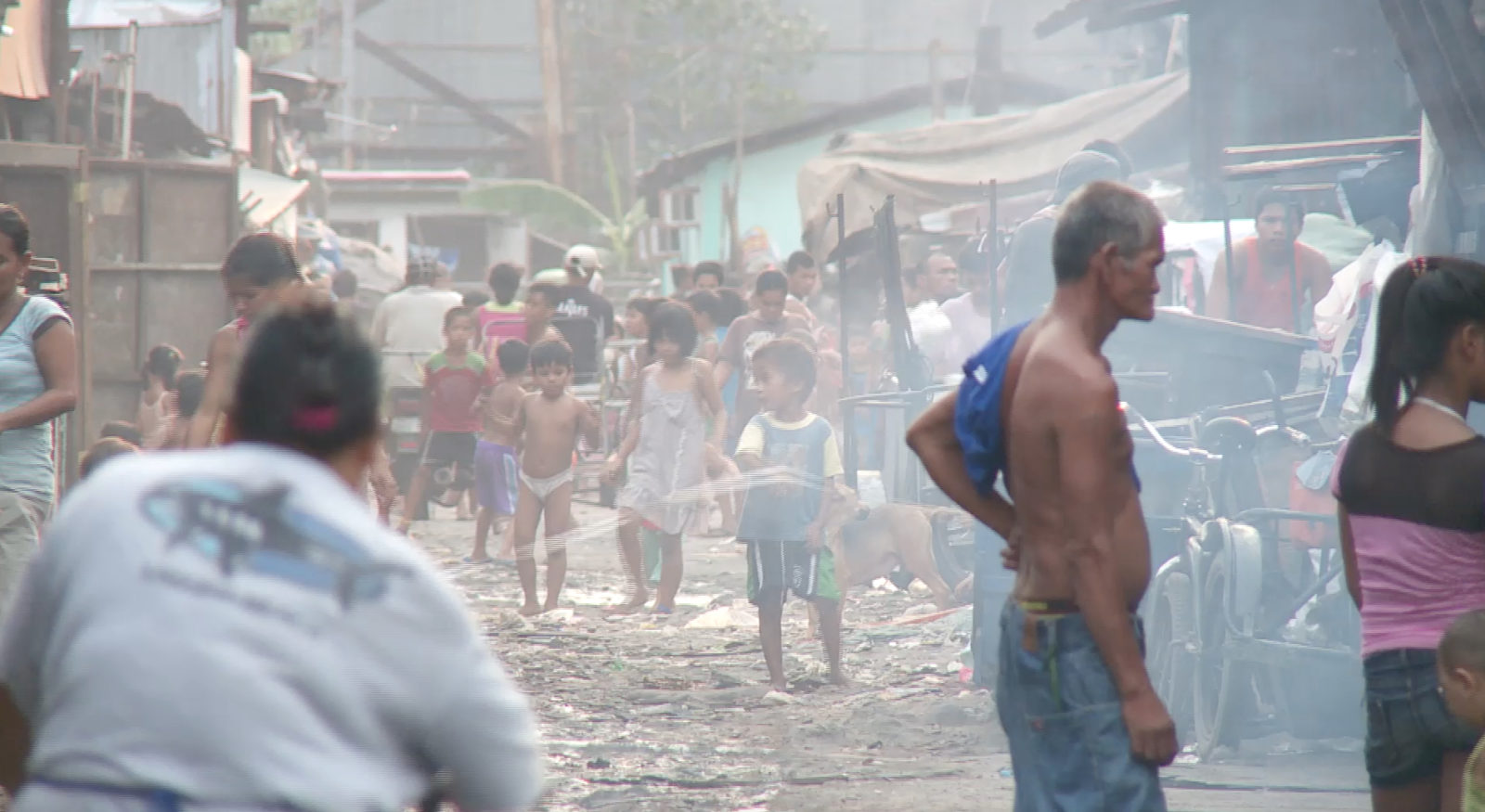
Correlation with Poverty
Some proponents of the new reproductive health law say an entire nation’s dream has been broken by its failure to control population growth.
Point of View
“We know that there is a big correlation between number of children and poverty incidents. So the less number of children you have, the lesser are your chances that your family is poor. So that is one aspect. And we can see this not just a family basis, but on a countrywide basis.”
Point of View
“Give people job opportunities, give children education, and then you bring them out of poverty. Just giving them condoms and contraceptives will not automatically draw them out of poverty.”
